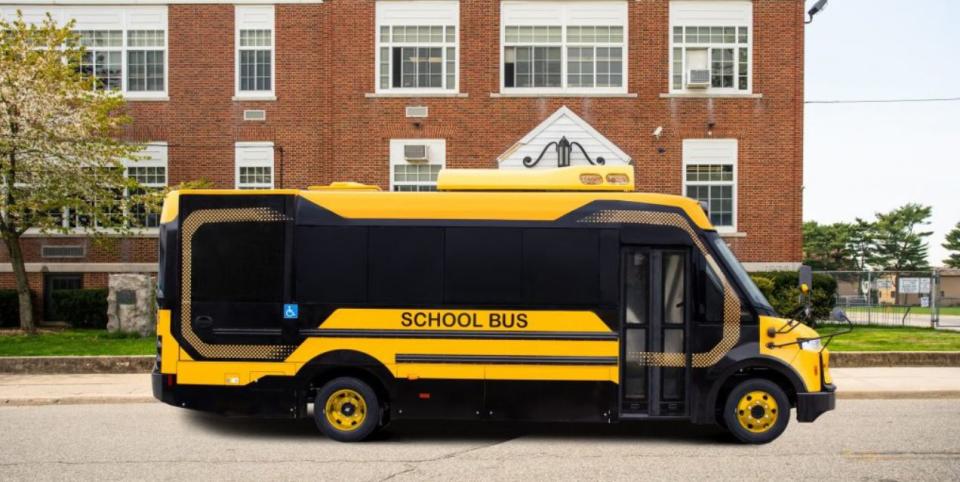BYD Reveals Electric School Bus with V2G Tech

BYD unveils battery-electric Type A school bus, slated to be available in three lengths and with handicap accessibility.
The bus has a range of up to 140 miles and vehicle-to-grid charging capability, which could provide energy back to the grid or a battery storage system.
BYD has previously unveiled a larger battery-electric Type D bus designed to carry over 80 students, but it's not the only automaker offering electric school buses.
If there was a segment of public transportation in the US that was overdue for EV disruption, school buses—with their thick clouds of diesel smoke—are probably near the top. But despite the availability of a handful of battery-electric models, progress in their adoption nationwide has not exactly been easy to notice.
A few days ago BYD introduced its second battery-electric bus model, powered by a lithium iron phosphate (LFP) battery. Slated to be available in three lengths—22.9, 24.5, and 26.7 feet—this is a Type A bus meant to transport about 30 students while offering handicap accessibility. Crucially, the bus is said to offer a range of 140 miles, which would be enough for most daily routes.
Curiously, BYD will offer one unexpected feature for what is at its core a commercial model: Bidirectional, vehicle-to-grid (V2G) charging that would allow the bus to cycle energy back to the grid. This type of feature has usually been pitched to private EV owners who also have a home-based energy storage system.
"Just like our Type D bus introduced last year, our Type A bus bi-directional charging capability is a game changer," said Samuel Kang, BYD's Head of Total Technology Solutions. "School buses can be charged overnight when energy demand is low, and clean emission free energy can be fed back into the classroom during school hours when the bus is parked keeping classrooms well-lit and students and teachers plugged-in."
The Type A bus will also be able to be juiced up at 150 kW DC fast-charging speeds, even though fleet buses operate for only for a small portion of the 24 hour cycle. It's more likely that school districts will recharge buses with more modest (and cheaper) 19.2-kW single-phase AC charging.
BYD says that its battery-electric powertrains can cut fuel costs by up to 60% compared to diesel buses, while cutting maintenance costs by up to 60% as well. Given the fuel efficiency of current diesel buses, these claims sound believable.
The Chinese automaker—not quite a household name in the US yet—revealed a much larger Type D bus last year, meant to carry just over 80 students. But it's not the only builder of electric school buses, as Blue Bird has rolled out its own model four years ago and has attracted orders for hundreds of buses from school districts in some parts of the country.
We're at least a decade away from even 10% of all school buses on US roads being battery-electric, so we'll be living with all that diesel smoke for some time—as will our students.
"This is a timely solution: BYD's Type A battery-electric school bus is designed to be there for school districts 24 hours a day, both as a vehicle and power storage resource," said Stella Li, president of BYD North America. "The BYD combination of top-notch safety features, innovative design, and reliable performance makes this a practical and highly affordable zero-emission solution."


 Yahoo Autos
Yahoo Autos 